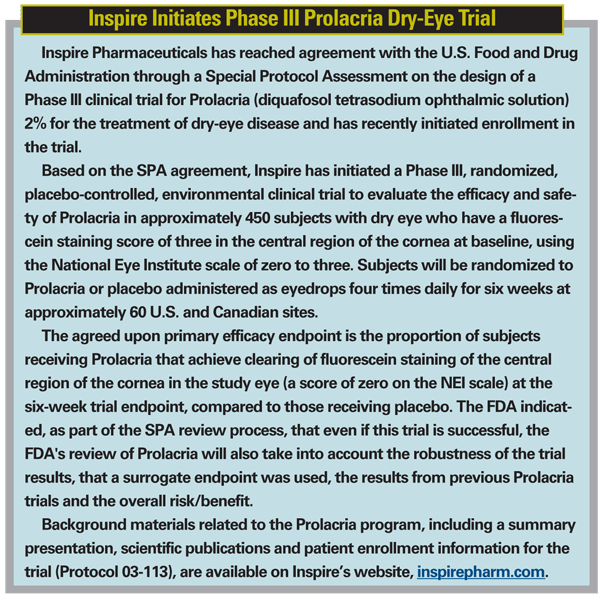Pharmaceutical giant Pfizer announced its plans to make publicly available its compensation of
In 2008, Pfizer collaborated with almost 8,000 clinical investigators to conduct more than 280 studies to better understand how our medicines can be safely and effectively used to the benefit of patients. Pfizer makes payments to investigators and research institutions to compensate them for the work done on the company's behalf. As part of this initiative, Pfizer will ensure that payments are posted in an accurate, clear and consistent manner that clearly demonstrates the recipient name or institution, the payment made and the service provided.
Pfizer plans to publish its first annual online update on pfizer.com in early 2010. The report will include payments made from July 1, 2009, going forward.
Parameters under consideration include reporting payments to recipients whose aggregate amount exceeds $500 in a calendar year, including the value of non-monetary items, such as meals, that exceed $25 in value.
Specifically, this includes disclosing all payments to:
• all practicing health-care providers who can prescribe medicines;
• major institutions for ongoing clinical trials; and
• all principal investigators and other entities for Phase I-IV clinical trials sponsored by Pfizer beginning after July 1, 2009.
The payments include those for: clinical development and commercial consulting; promotional speaking; Phase I-IV clinical trials; investigator-initiated research; and meals and other non-monetary items.
"We are committed to taking the steps necessary to achieve greater transparency in our interactions with

Studies: Vigorous Exercise Cuts Risk Of Vision Loss
Two recent Studies offer evidence to recommend that patients get active to save their vision.
Paul T. Williams led prospective studies at the Lawrence Berkeley National Laboratory,
The cataract study tested whether greater vigorous physical activity (kilometers per week run) and greater cardiorespiratory fitness (10-km race performance in meters per second) reduced the incidence of clinically diagnosed cataract. It was based on self-reported clinical diagnosis of cataract in nondiabetic, nonvegetarian and nonsmoking male (n=29,025) and female runners (n=11,967).
Incident cataracts were reported by 733 (2.53 percent) men and 179 (1.5 percent) women during seven-plus years. The risk for incident cataract increased with BMI, such that the risk in men >27.5 kg/m2 was 88 percent larger than in men <20 kg/m2. Men's cataract risk declined significantly in relation to running distance (p=0.01), even when adjusted for BMI. Men who ran ≥64 kilometers (about 40 miles) per week had 35 percent lower risk for cataract than those reporting <16 km (about 10 miles per week, 28 percent lower risk when adjusted for BMI). In addition, men with greater cardiorespiratory fitness were at significantly less risk for development of cataract than were the least fit men. This result was not accounted for by adjustment for running distance or BMI. Compared with the least fit men, those who ran faster than 4.75 m/s had 50 percent lower risk for incident cataract (43 percent lower when adjusted for km/wk and BMI).
The second study was based on self-reported clinically diagnosed macular degeneration in male (n=29,532) and female (n=12,176) runners followed prospectively for 7.7 years. Survival analyses included incident AMD versus average running distance (kilometers per day), cardiorespiratory fitness (10-km footrace performance), body mass index, cigarette use and diet at baseline.
The 110 men and 42 women reporting incident AMD were older than those unaffected (mean ±SE: 54.81 ±0.97 vs. 44.86 ±0.06 years), and the men were significantly more likely to have once smoked cigarettes (50.6 vs. 41.2 percent, p=0.04 when adjusted for age).
Age- and sex-adjusted AMD risk was greater in the men and women who consumed more meat (3.17 ±0.20 vs. 2.55 ±0.02 servings/wk) and less fruit (9.41 ±0.70 vs. 10.92 ±0.05 pieces/wk). The men and women reporting incident AMD ran for exercise significantly less than those who remained unaffected, when adjustment was made for age and sex (4.57 ±0.30 vs. 5.34 ±0.02 km/d, p≤ 0.01). When adjusted for age, sex, diet and smoking history, the relative risk for AMD decreased 10 percent per km/d increment in running distance. Moreover, compared with the men and women who averaged less than 2 km/d, those averaging 2 to 4 km/d had 19 percent lower adjusted risk, and those averaging ≥4 km/d had 42 percent to 54 percent lower adjusted AMD risk.
Sirion Partners with AVR
Sirion Therapeutics has entered into an agreement with Advanced Vision Research to co-promote the latter's MacuTrition oral retinal nutritional supplement and its NutriDox Convenience Kit for meibomian gland therapy within the United States.
AVR manufactures the TheraTears dry-eye product line. The Sirion sales force will promote MacuTrition and the NutriDox Convenience Kit and provide sampling for the TheraTears line.
The companies report that MacuTrition is the first major oral nutritional supplement that addresses oxidation, inflammation and neovascularization. MacuTrition, available over-the-counter, is a combination of synergistic anti-oxidants, anti-inflammatories and anti-angiogenics, including fish-oil omega-3s, vitamin D, green tea extract and tocotrienol (vitamin E).
The NutriDox Convenience Kit, available by prescription, includes doxycycline 75 mg, TheraTears Nutrition—a flaxseed oil/fish oil/vitamin E omega-3 supplement, and the iHeat portable warm compress system to help address these symptoms.



